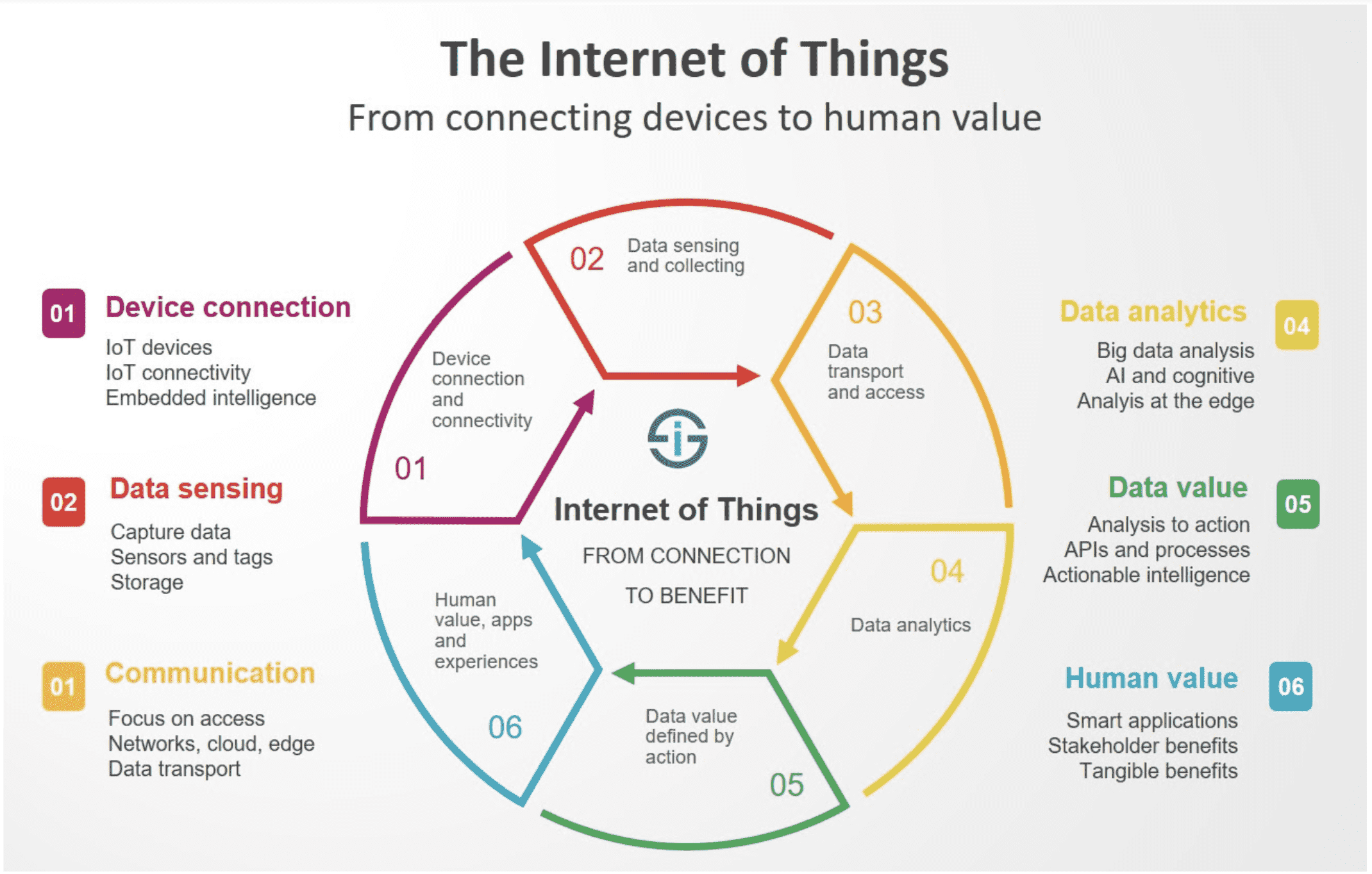Such integration can result in efficiency improvements, economic benefits and reduced human exertions. Through ideation sessions, workshops and speaking engagements, you can find out how your business can become ‘Internet of Things’ focused, gain valuable insights about ‘IoT’ implementation and see how IoT can improve your efficiency, productivity and product. This is done by monitoring the overall business process, improving your customer experience, and boosting over organizational productivity.
My name is Jesse van Doren and alongside my team at Brize, we have extensive knowledge in the Internet of Things (IoT) phenomenon. Through detailed and future-thinking IoT strategy sessions, IoT workshops, IoT speaking engagements and IoT applications, I can assist in the implementation and future trends of IoT applications around the globe.
What is the Internet of Things?
The term IoT encloses everything connected to the internet. Yet, with the constantly-evolving technological world, the Internet of Things could be referred to as being made up of devices which are connected together. When connecting such devices and combining them with automated systems, it becomes possible to gather information and later analyse it and create an action. IoT communication within devices allows it to be not only within closed silos but also across different networking types, creating a much more connected world.

IoT Applications
IoT applications vary and evolve on a constant basis, being also subject to the constant innovation of technological applications and developments in today’s world.
Current IoT applications include:
1. Smart homes: The appearance of IoT in homes include, for example, switching on the heating before you have reached your house.
2. Wearables: These devices are installed with IoT sensors and softwares that collect data and relevant information about users. This data is later analysed and insightful information is extracted about the user, to create a more personalised profile and therefore improve targeting. Such devices range from fitness, to health and entertainment. The requirements for an efficient wearable is to be highly energy efficient or ultra-low power and small in size.
3. Industrial IoT: IIoT is an expanding sector which comprises industrial engineering with sensors, software and big data analytics, all of which work together to create brilliant machines. The driving philosophy is that smart machines are more accurate and consistent than humans regarding communication through data, data which can help companies pick inefficiencies and problems sooner.
4. Smart cities: Examples of IoT applications in cities include smart surveillance, automated transportation, smarter energy management systems, urban security and environmental monitoring among others. Smart cities will help solve problems related to pollution, traffic congestion and shortages of energy supplies. This is done by installing IoT sensors and using web applications through which citizens can find, for example, free available parking slots across the city.
What the future holds for the IoT industry
The essence of IoT is interconnectivity, not only within devices but also between customers, partners and suppliers. For this reason IoT could be referred to as the Internet of Everything. IoT solutions are created to solve very specific problems. And it now results difficult to depict the benefits and capacity of IoT in an unconnected world.
However, in order to optimize the use of IoT applications, various subjects need to be addressed:
- Different tools are needed: When focusing on where IoT applications are heading, it is important to rethink computing architectures and tools, as this will impact the way we collect, analyse and act over data appropriately.
- IoT is complex: IoT can be depicted as relatively easy to master. This is because sensors used in IoT applications are economical and Wi-Fi and Bluetooth are “free” to some extent, therefore, IoT could be perceived as accessible to implement. Yet, we are unaware of the many moving parts, since many of the IoT sub-components are changing quickly, such as processors.
Straightforward-applications could include mounting a sensor which can be accessed from a smartphone. However, if trying to design a reliable sensor which can remotely be controlled and upgraded then the level of complexity increases.
What myself and my team can do for you
Because of the diverse applications and industries IoT can reach, we should be not only be discussing the future of the Internet of Things but also the Intelligence of Things, because collecting data on its own will simply not be enough.
Want to learn about how IoT can help your business? Concerned about how the IoT industry will develop with your business? My team at Brize and I have extensive knowledge in how you can build your business with the utilization of IoT applications, how it will benefit your in the long-run, how to deal with drawbacks and how to apply changes within your business to grow into an IoT-centered field.